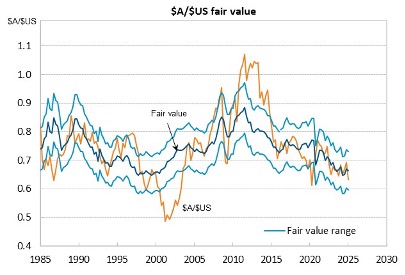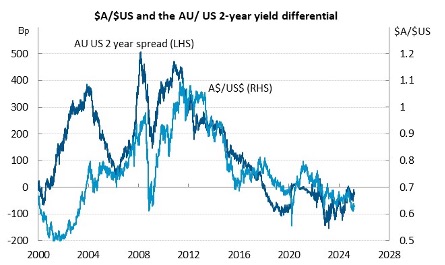Our fair value estimate for the $A/$US is around $US0.66 vs the spot price of $US0.63 (on 17 March). This suggests some upside risk if trade tariffs were not an issue for growth. However, no one will win a global trade war and if the fallout is weaker global growth, then the AUD could easily trade lower.
- China’s response to the global trade war is important for the Australian dollar. The authorities have signalled their intention to support domestic demand via consumer spending initiatives targeting health and housing. If this is targeted towards new housing, then the price of iron ore may respond positively. The trade war is the US against the rest of the world with old strategic alliances of little value.
- European steel has been dragged into the trade war along with Canada and Mexico, and this will put downward pressure on both global growth and the $A.
- The global trade war is also pushing back expectations about when the RBA can cut rates again. We think the market is right to focus on the downsides to growth from tariffs rather than inflation, given margins will absorb at least some of the increase in tariffs.
The Australian dollar is around our estimate of its fair value given the US- Australia 2-year yield differential.
| Figure: $A/$US fair value |



